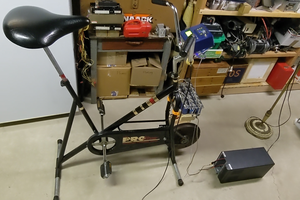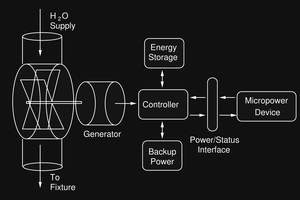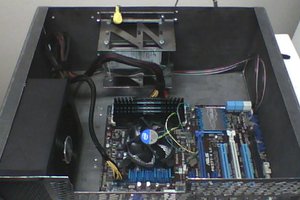We all know static build up in clouds is pretty powerful, but we haven't really found a way to harness this power. Lightning rods work by harmlessly discharging the atmospheric electricity (and occasionally lightning) into the ground. I propose we add an electrolysis rig (sitting in water) to a lightning rod to turn some of this electricity into browns gas, which can be used to run a plethora of things such as a backup generator, small engines, or just a heater warm up the place. Since all of this runs off of browns gas, the only exhaust will be water vapor.
Atmospheric electricity as a fuel for electrolysis
Much as the title implies, collecting static electricity from the atmosphere to power an electrolysis rig.
 Terry Daniels
Terry Daniels



 shenning
shenning
 alnwlsn
alnwlsn
 Ted Yapo
Ted Yapo
 Jake
Jake
Compressing Brown's gas for storage would not be even remotely safe. There was a write-up about a Florida explosion that involved someone compressing a similar mixture with the intent of selling it to restaurants.
Edit: Found the article:
http://www.fireengineering.com/articles/print/volume-167/issue-11/features/the-dangers-of-hydrogen-based-experimental-fuels-p1.html